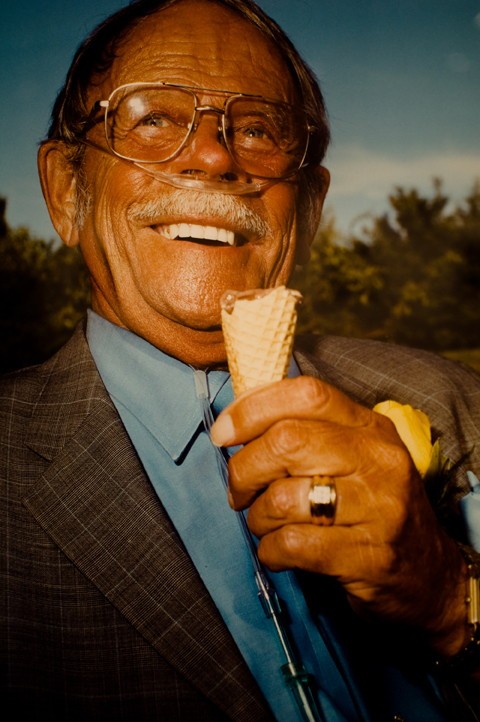Concerned with the surreal and the unconventional
Local photographer Karen Asher’s latest exhibit visually explores the mystery of identity
Karen Asher’s No Cause for Concern exhibit is an intriguing display of a variety of photographs which investigate questions of identity. Seemingly random choices of individuals and events are photographed in Asher’s collection, reflecting her appreciation for the awkward.
Asher uses unconventional framing devices in very deliberate ways, such as her “Mom & Man, 2009” portrait. It features two seated, hospitalized patients underneath a sign which has been cut off partway through. The only portion of the sign included in the photograph displays the words “remove the chair.” It invites the viewer to look beyond the photograph and to consider what assumptions they might have about what the rest of the sign might say.
In a similar technique, Asher emphasizes particular details to illustrate a theme which ties each portrait together.
“Dad, 2009” focuses on eyes; the subject in the foreground stares directly at the viewer with a narrowed gaze. In the background we can see a number of pictures hanging on the walls. The only pictures clearly visible to the viewer are of a man with a patch over one eye, and another of a man and a woman. He looks away uncomfortably and her eyes are closed in mid-laughter.
As a whole, the pieces relate to one another primarily because of Asher’s photographic style. She plays with the contrast of colours and detail, such as the blue shirt of “Mom in Blue, 2009” amidst darker shadows, and the clear subject of “Johnny, 2008” against a blurred background.
Some of these pieces are truly beautiful works of art, especially “Welleh, 2008.” Asher takes advantage of vivid, bold geometric shapes in this piece and balances sobriety with a shocking burst of bright colour.
However, other pieces leave the viewer to wonder why the images were deemed significant enough to capture with a photographic lens. “Parade, 2009” and “The Fall, 2009” are both too busy and prevent the viewer from appreciating the frozen moment because the photographs lack a focal point to draw the eye.
Although this exhibit supposedly features Winnipeg and the individuals who reside within our city, the majority of the photographs do not carry any innate “essence of Winnipeg.”
Delighting in the awkward tension between camera and subject, Asher’s collection depicts exaggerated attitudes and expressions. This makes for a visually compelling exhibit, but it also speaks to a sense of the surreal, taking away from any resemblance to a distinctly Winnipeg culture.
Published in Volume 64, Number 19 of The Uniter (February 11, 2010)







